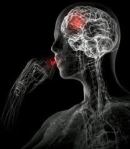DIAGNOSIS, PROGNOSIS AND BEYOND ( adapted from Women of Silence – The Emotional Healing of Breast Cancer-Grace Gawler pub 1994, 2003. Click here to buy your copy – also available in e-Book.) Only available from the author.
It was noticeable in the early days of conducting support groups, that when people spoke of their lives and their cancers, other patients in the room would begin to nod knowingly as they identified how their own story aligned with those dealing with the same cancer.
We all have an ability to switch off our life force and lose our passion for living. There are many stories from indigenous cultures of people who consciously died because they believed the would. Perhaps such a message triggers a powerful belief that causes the soul to leave. This ability has also been demonstrated in many indigenous cultures including the Australian aborigine, the Kikuyu of Kenya and the bushmen of the Kalahari. There have been many instances of this phenomenon. These cultures live very much in the here and now, so when imprisoned, they believe it is forever and they simply die. They lose their will to live or will to be because they see no end to their situation. Tribal indigenous Australians are known for the phenomenon of “bone pointing” where healthy individuals die because their belief system supports the tribes medicine man who has a position of power and authority.
There are parallels between these experiences and the experiences of those diagnosed with a life threatening illness. Often, much depends on how the diagnosis and prognosis are delivered to the patient. At a vulnerable moment, information poorly delivered by a doctor and/or poorly received by the patient can cause the spirit to retreat and withdraw, eventually resulting in death. I have known many patients with six months to live who die almost to the day as if set by some invisible internal clock. When lack of hope and possibility are vocalised by a person of power, the patient is, at that moment, faced with a life and death decision. So powerful can it be, that all else, all survival messages, are filtered out of the patient’s awareness and the process of dying begins. Continue reading “Grace Gawler Writes About Beliefs, Cancer & the Power of Placebo in Survival Part 2”


